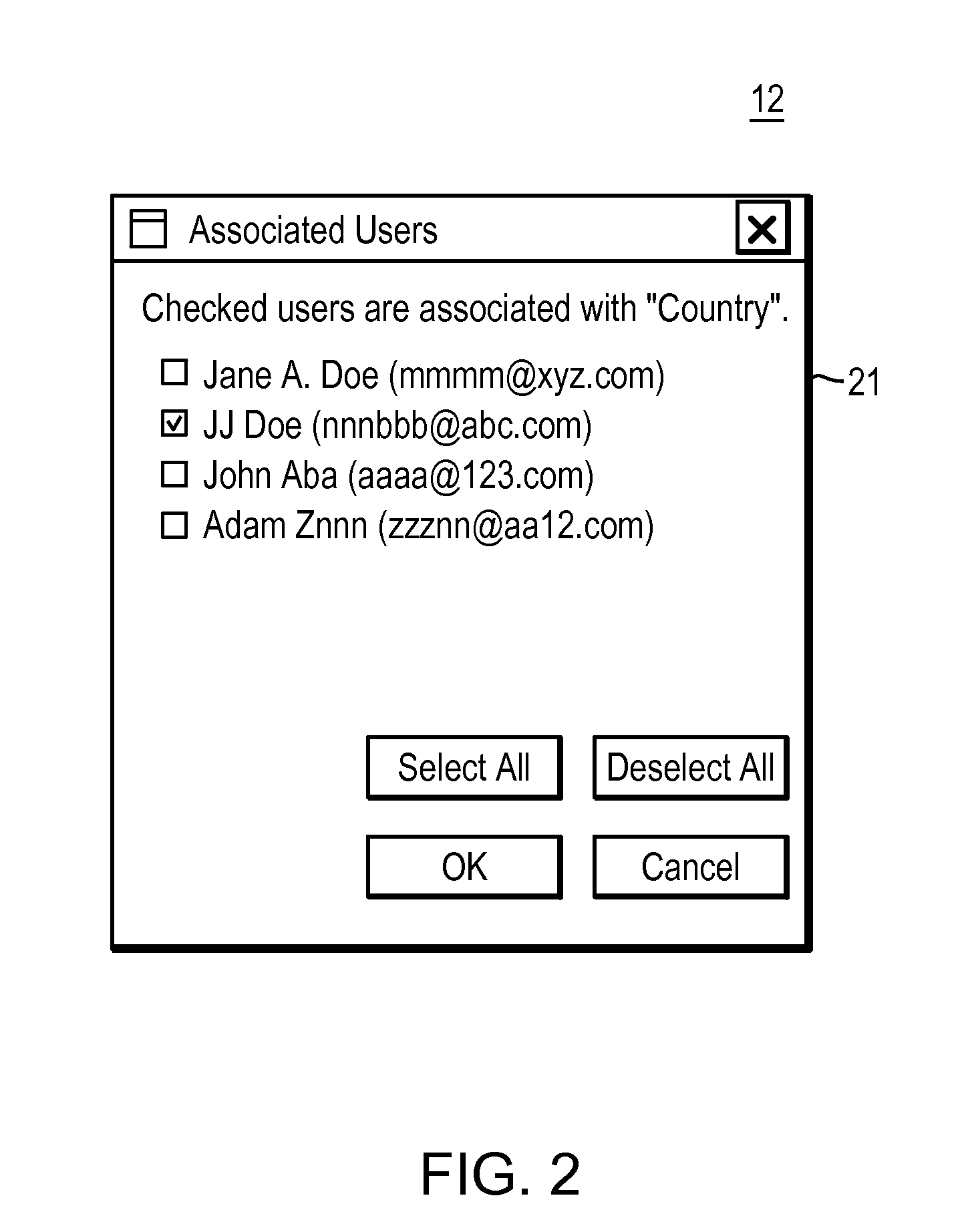System and method for ontology-based location of expertise
a technology of expertise and system, applied in the field of automatic location of expertise, can solve the problems of time-consuming and difficult for experts to think of keywords, labor-intensive for experts to keep, and experts from asserting their expertise, so as to reduce the burden of manual association of experts
- Summary
- Abstract
- Description
- Claims
- Application Information
AI Technical Summary
Benefits of technology
Problems solved by technology
Method used
Image
Examples
Embodiment Construction
[0046]With reference now to FIGS. 1-8 an example, non-limiting embodiment of the invention is shown and described.
[0047]User Experience in One Embodiment
[0048]In any complex system, particularly a collaborative one that manages user-defined content for a large number of people, users will encounter situations in which they feel the need to ask questions of, or ask for help from other users who have expertise in a particular aspect of the system or its content. Collaborative knowledge management systems are a good example of a complex system where novice users may have frequent questions for more experienced users, where representing knowledge using formal semantics can be very challenging. Questions will arise as to the right way to represent a particular situation, activity, or individual, or how to capture certain relationships. The intended meaning of some of the classes and properties in the ontology may not always be clear. In such cases, a user will want to locate more experie...
PUM
 Login to View More
Login to View More Abstract
Description
Claims
Application Information
 Login to View More
Login to View More - R&D
- Intellectual Property
- Life Sciences
- Materials
- Tech Scout
- Unparalleled Data Quality
- Higher Quality Content
- 60% Fewer Hallucinations
Browse by: Latest US Patents, China's latest patents, Technical Efficacy Thesaurus, Application Domain, Technology Topic, Popular Technical Reports.
© 2025 PatSnap. All rights reserved.Legal|Privacy policy|Modern Slavery Act Transparency Statement|Sitemap|About US| Contact US: help@patsnap.com



